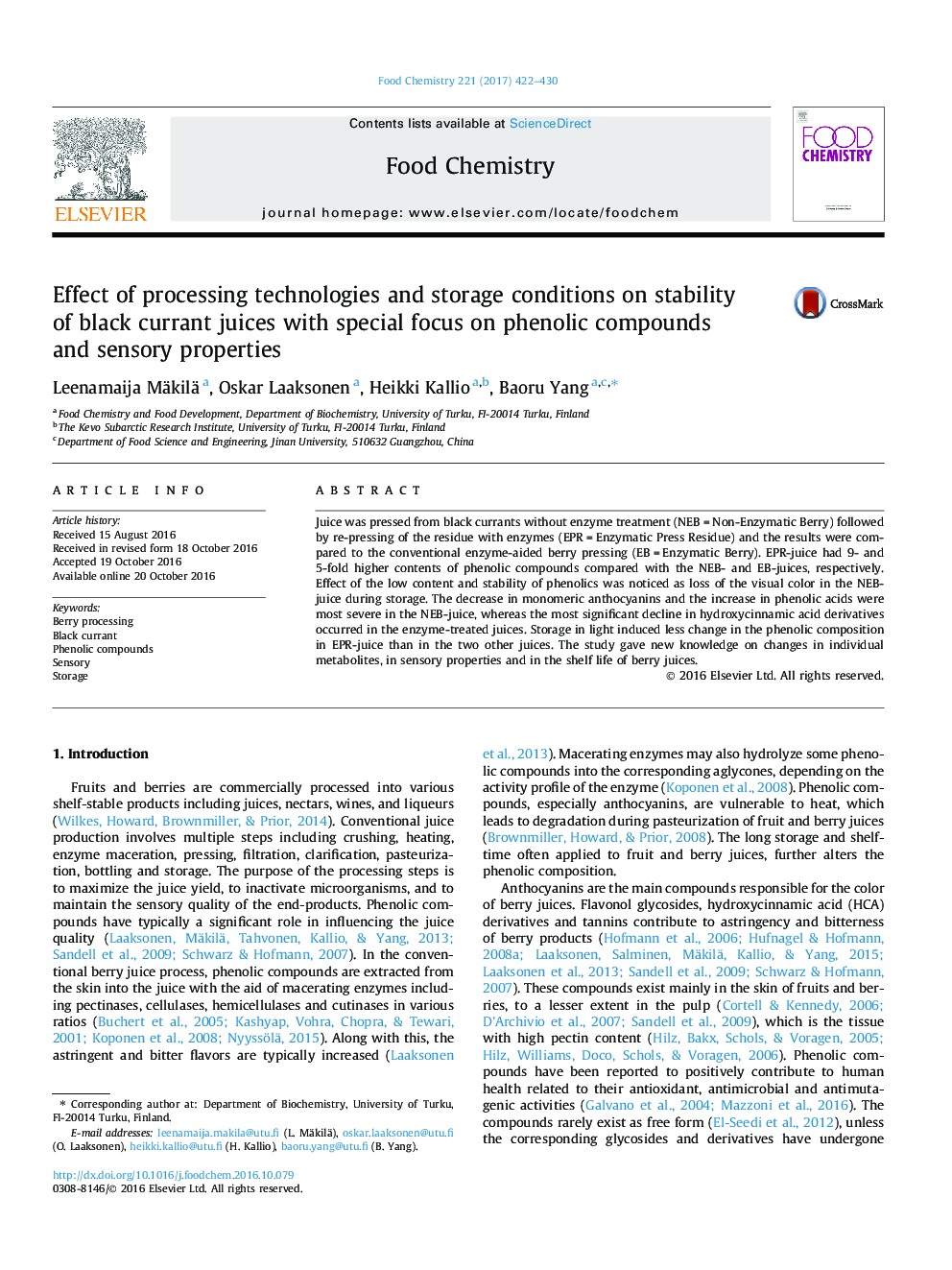| کد مقاله | کد نشریه | سال انتشار | مقاله انگلیسی | نسخه تمام متن |
|---|---|---|---|---|
| 5133753 | 1492071 | 2017 | 9 صفحه PDF | دانلود رایگان |

- Comparison of juices produced with a two-phase process and a conventional pressing.
- Processing technology influenced stability of composition and sensory properties of juices.
- Non-enzyme-aided berry pressing produced juice with the lowest phenolic content and stability.
- Anthocyanins decreased and phenolic acids increased during storage of all juices.
Juice was pressed from black currants without enzyme treatment (NEBÂ =Â Non-Enzymatic Berry) followed by re-pressing of the residue with enzymes (EPRÂ =Â Enzymatic Press Residue) and the results were compared to the conventional enzyme-aided berry pressing (EBÂ =Â Enzymatic Berry). EPR-juice had 9- and 5-fold higher contents of phenolic compounds compared with the NEB- and EB-juices, respectively. Effect of the low content and stability of phenolics was noticed as loss of the visual color in the NEB-juice during storage. The decrease in monomeric anthocyanins and the increase in phenolic acids were most severe in the NEB-juice, whereas the most significant decline in hydroxycinnamic acid derivatives occurred in the enzyme-treated juices. Storage in light induced less change in the phenolic composition in EPR-juice than in the two other juices. The study gave new knowledge on changes in individual metabolites, in sensory properties and in the shelf life of berry juices.
Journal: Food Chemistry - Volume 221, 15 April 2017, Pages 422-430